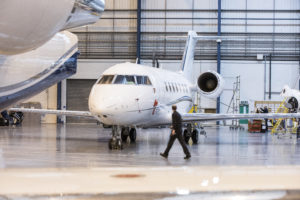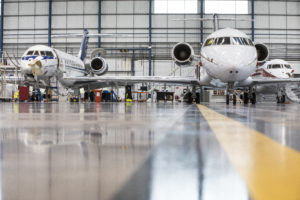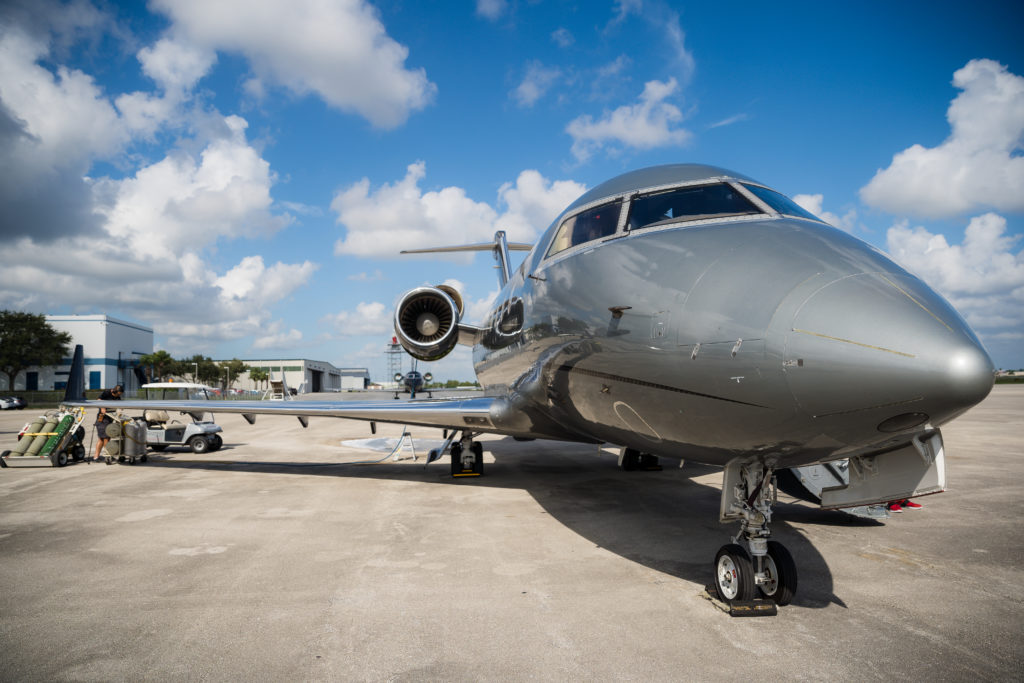Words | Mario Pierobon
“Plan the flight, fly the plan” is an old pilot adage pointing out that flight planning is instrumental to ensuring the safety and efficiency of flight operations. In the context of an ever more complex business aviation network, the technological upgrade of flight planning software is resulting in new efficiencies.
Indeed, there has been significant progress in flight planning software technology in recent years. This has positively impacted the user-friendliness of the latest tools currently available. “With previous products there was a lot of code-based entries, whereas now one can get very useful information within Europe and the US that links up with Eurocontrol validated routes, including advice on weather and notices to airmen [NOTAM] affecting those routes,” says Paul Cremer, operations delivery manager at Gama Aviation, which provides flight planning services.
“Things have come a long way. Whereas previously one was looking at various pieces of software to provide the overall picture, now there is software that provides color coded information for weather and NOTAMs which links in and updates constantly with the actual flight plan.”
Feature consolidation

The latest tools available to flight planners are increasingly helping them to do their job. “Aviation has seen a lot of changes in recent years, and we can expect that it will see an accelerated growth path in the years to come,” says Henry ‘Duke’ LeDuc, regional operations manager at UAS International Trip Support.
Most of the changes are driven by the desire of the people involved in flight planning to have a more collaborative and seamless experience in as few applications as possible. LeDuc says, “Some of the upgrades to the flight planning systems that planners and crews have been able to take advantage of mostly involve bringing more tools into one application.
“Tools such as ForeFlight Dispatch have been able to integrate the Jeppesen charts into the application so that the planners and pilots will not have to go to several applications in the planning process,” he adds. “Moving forward people are using tools like FlightBridge to take greater control of the trip planning, reducing dependency on multiple vendors and making it easier to track services in one collaborative tool.”
Flight planning software technology has evolved to the point that, when a flight plan is reviewed the day before departrure, one will know that the weather and NOTAM information will be up to date and that the pilot will continuously be able to download the most updated information. Cremer says, “We work with a number of products from different software providers and via application programming interface [API] connectivity we are connecting different software solutions with our myairops aviation management software to make trip support more efficient. We are working with ForeFlight and PPS on API connectivity and with Rocketroute.
“As a trip support company, we offer services with software by Universal, Honeywell, and ARINC,” Cremer says. “The information that is already set in our software, such as route, number of passengers, who the crews are, departure and arrival times and tail number, can be extracted and used to populate the flight planning software.
“As a flight planner, whereas before one had to take the information from one source and type it into another system, one does not have too many boxes to fill and can avoid many keystrokes and simply tweak the final information to finally build the flight plan.”
According to Lupita Wilson, strategic marketing leader at Collins Aerospace, flight planning has evolved over the years to bring more situational awareness to the pilot. “Tools are providing more data to assist the pilot in making those quick tactical decisions to ensure flight safety,” she says.
These tools include weather hazards, airport suitability, weight and balance and runway performance coupled to flight planning. “Tools will continue to evolve and allow for even more optimization to ensure a safe flight and achieve the goal of long-term sustainability that the industry is striving for,” Wilson adds.
With the software technology currently available it is possible to take the information from the flight planning software and perform an analysis of the efficiency of the route, observes Cremer. “Our system can look into information available within the dispatch profile and determine all the possible routes on behalf of the planner thereby providing a number of available options, for example, the most efficient routing, the shortest routing, and the most fuel-efficient routing for the planners to choose according to the given requirements,” he says.
“In addition to all validated routes, one can see further information on each available option and look at the available maps to see whether it is a sensible routing. For instance whether it is going too far north or whether it is doing some kind of dogleg.
“You can use your own expertise to make the necessary assessment and generate the required efficiencies in the planning and in the conduct of the flight.”
Major technical trends

There are some major technical trends that are shaping how flight planning and support is done. Harnessing data is a key trend that drives innovation in the flight planning space, according to Wilson. “Programs such as FAA’s System Wide Information Management [SWIM] allow data to be shared throughout the aviation industry so that airlines and business aircraft operators can optimize their routes and reduce fuel burn. Integrating this data into the flight planning tools puts this information at the fingertips of dispatchers,” she says.
Other technological developments that have been employed by people in the industry revolve around communication. “There has been an appetite to move away from emails in favour of more collaborative communication tools such as WhatsApp, Slack and Google Sheets. People have been more mindful about the security of their information by using major cloud-based platforms such as Box, Dropbox, or Google Drive”, says LeDuc. “Having cloud based remote work has enabled teams to be better prepared for disruptive anomalies and weather events. However, due to the inherent separation, it has increased our reliance on more varied platforms of communication.”
Wilson observes that mobility is also critical for pilots and flight departments in general. “They want to do their work anywhere, anytime. Mobile devices allow them to complete their tasks and also to access any support documents. In fact, more and more flight departments are moving to paperless operations.”
Legacy of the pandemic

Remote work is a legacy of the current global pandemic. “If one had asked before February 2020 if it was possible to run an operations department without this being office based, the answer would have been an absolute ‘no’,” says Cremer. “However, the pandemic hit and we had to act very quickly. We worked in conjunction with our IT support and myairops teams to come up with some solutions on how to get the operations department personnel to work from home and it worked.
“The officers would connect via their hardware from home, and we built a system allowing them to have access to everything they needed while being home-based.”
In the home office environment communications occurs via internet-based platforms or regular calls for the likes of job hand overs. “We continued to use the task-based system that is built into myairops and which allows us to keep track and execute all the different tasks that are needed on a flight, things like special catering requirements. The task-based system allows us to allocate tasks to different members of the team and to monitor progress,” says Cremer.
“In addition, when a task is signed off, it goes into a completed action. It can be reviewed at any time if one wants to look at the history. From a task management point of view it is also possible to add tasks, such as a helicopter transfer on arrival.
“Within the myairops system there is also an ADS-B tracking function. One can click on the aircraft within the system and follow the flight. Software solutions are much more powerful than they have ever been, and this allows people to work from home more easily.”
According to Wilson, a legacy of the pandemic is increased resilience and innovation in organizations. “Because business does not stop, our customers needed to continue to fly and wanted to do so as safely as possible. So, we pivoted quickly to provide continuous updates on Covid-19 country restrictions.
“While flight activity dropped in the first months of the pandemic, the number of filed flights plans today is exceeding pre-pandemic levels,” she says.
“The pandemic drove innovation and pushed forward conversations about contactless passenger journeys. At Collins Aerospace, we are no stranger to that contactless journey and are delivering solutions for the commercial aviation segment. Passengers enrol their biometrics and use this token to move throughout their journey, including check in, security, lounge access and boarding. That same technology can be applied to the business aviation travel experience,” Wilson adds.
Collaborative working
Looking ahead, the business aviation sector can use technology to work more collaboratively as newer technologies and forms of automation enable the opportunity for flight planners to work more efficiently. According to LeDuc, business aviation stands to gain from collaboration more than other segments of aviation because there are many cost centers. “We are often expected to do more with less. Operations are becoming more complex and with an increased workload, teams are looking to technology and outsourcing to increase their capabilities without increasing staff in-house,” he says.
There are still many disparate systems that are used by flight planners to complete their tasks, according to Wilson. “Connecting those systems and enabling them to share data will create efficiencies for flight planners, dispatchers, pilots and others in the flight department as well as for those who support business aviation, like caterers, fuel providers and FBOs. Ultimately it is about enabling operators to make more informed decisions with tools at their fingertips”, she concludes.





